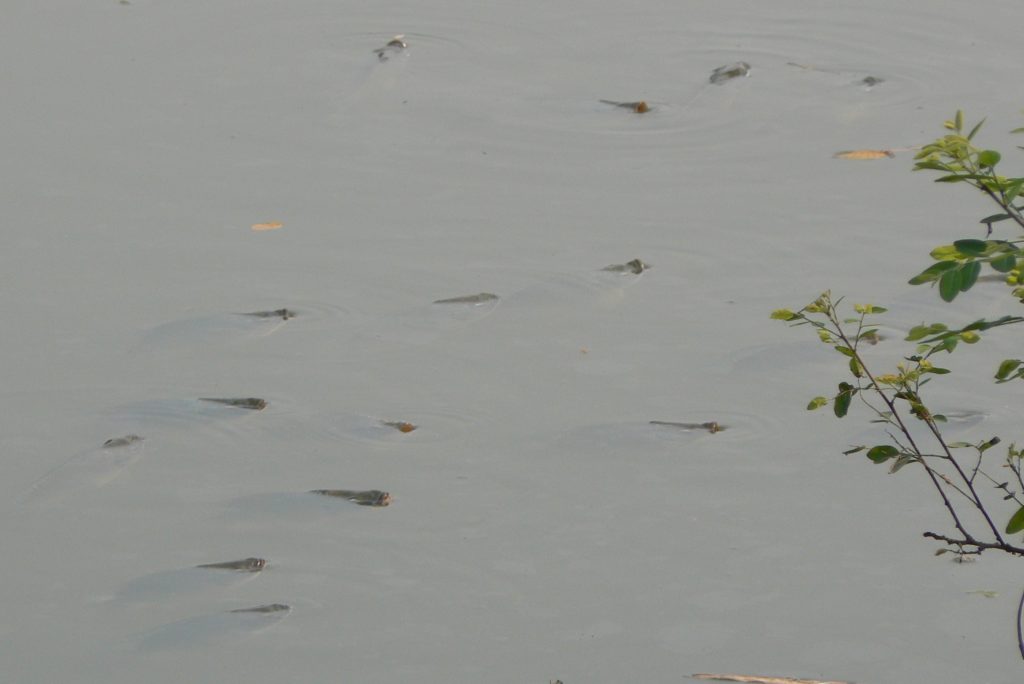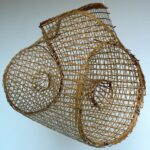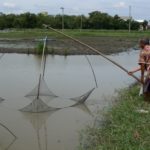A typical fishing technique in Vietnam is ripping a weighted hook with multiple side arms through still water and hoping to hook unsuspecting fish somewhere on their body. Hooking a fish at the lips with the correct size and style of hook—as in conventional angling—will highly likely hold the fish on the line, whereas getting randomly hooked somewhere on the body will often result in heavily injured fish by ripping out the hook(s) from soft flesh.

Fishing equipment for ripping

There are two main styles of hooks used. One is a spider-like contraption that holds six unbarbed hooks via thick, short fishing lines onto a cast lead weight.

The other style is a lead-weighted shank with three heavy and barbed hooks pointed parallel to the shank. Connected to a monofil fishing line and a very stiff carbon rod with only two leader rings (one on top and one nearly in the middle of the rod), they are connected to a manual fishing roll (made from either plastic or wood)
Choosing a fishing spot

When searching for a fishing spot, the fisherman carefully observes the water surface to find air bubbles created by fish. The main fish caught by this ripping technique are Tilapia niloticus, which like congregating and breathing oxygen on the water’s surface.

If they are not breathing at the water’s surface, at least some wave rings can be seen on the water from wallowing and congregating fish. If there are no apparent bubbles or wave rings around, the fisherman shoots some bait (e.g., cooked rice grains) by a slingshot into the water and waits until fish signs can be seen.
Rip fishing technique
Having chosen a fishing spot, the fisherman throws a hook with one hand at the fishing rod to the correct place. With the other hand, he holds the fishing rod and lets the fishing line spool off the rod unobstructed. Depending on the water depth in which the fish are expected to swim, the fisherman lets the multi-hook sink. Afterward, he immediately pulls the rod sideward by at least 90 degrees. See the video below.
The likelihood of catching fish with this technique is high. However, there is also a high loss of fish only caught at fins, bellies, or elsewhere. They will die in the warm waters due to infections or water in the belly, and so on. Therefore, dead fish bodies often float around lakes where rip fishing is done.
Lessons learned from fish ripping
- Fish ripping is a fishing technique conservationists will not employ due to its non-selective nature.
- The likelihood of injuring fish without actually catching them by ripping is high.
Further readings about Fishing in Vietnam on this website:
Trapping eels in Northern Vietnam
Trapping Snakeskin Gourami in the Mekong Delta
Using a stomping basket to catch fish in Vietnam
Fish trapping at a fast-flowing brook in Vietnam
.




